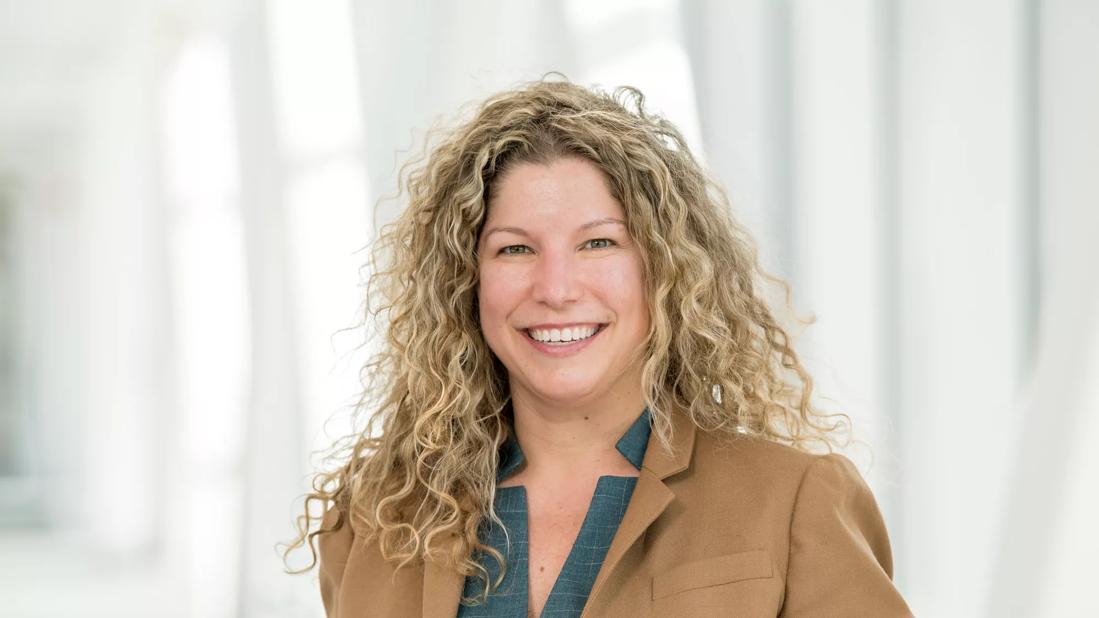What it takes to attract and nurture talent

In today’s healthcare market, the gap between the number of job opportunities and job seeker participation widens every month, says Kiersten Kanaley, Executive Director of Talent Acquisition at Cleveland Clinic.
Advertisement
Cleveland Clinic is a non-profit academic medical center. Advertising on our site helps support our mission. We do not endorse non-Cleveland Clinic products or services. Policy
“Every organization is recruiting the same caregivers here in Ohio and Florida, as well as nationally,” she says. Cleveland Clinic relies on a team of internal recruiters to attract a pool of job candidates with a range of backgrounds – from within the community and around the globe – to fill positions at its facilities across the U.S.
That’s a big responsibility, and it requires uniquely qualified talent acquisition professionals to achieve results. To be effective, says Kanaley, the next generation of recruiters must possess seven traits:
Candidate needs have changed during the pandemic, she adds. There may be gaps in employment or job hopping that previously could have raised red flags. “Today, recruiters need to get into the ‘why’ of a candidate’s career history, then advocate for people who would’ve been viewed as non-traditional candidates before the pandemic, but are now the new norm,” says Kanaley.
2. Creativity – “Today’s recruiter has to be creative in the way they connect with networks and identify pipelines,” says Kanaley. “How can you stand out from the competition?”
In the past, Cleveland Clinic relied on nursing student candidates coming to its hospitals for recruitment events. Now the healthcare system hosts back-to-school social events on college campuses, complete with food trucks. More than 150 students from the Breen School of Nursing at Ursuline College recently met with nursing leaders, caregivers and unit managers from Cleveland Clinic. “The resounding feedback was ‘thank you for coming to us,’” says Kanaley.
Advertisement
3. Strategic Thinking – “You need to have foresight and the ability to engage potential talent before the job position even becomes available,” says Kanaley. “Cleveland Clinic is being strategic by partnering at the community level to build a pipeline not only for today, but for the jobs of tomorrow.”
The health system collaborates with local high schools to offer a pharmacy apprenticeship program that allows students to work and apprentice simultaneously and graduate with a pharmacy technician certification.
4. A Data-driven Mindset – “Data gives us the power to be agile in our recruitment practices,” says Kanaley. Traditionally, the talent acquisition industry has used lagging indicators, such as time to fill a position. Instead, she says it’s imperative to look at leading indicators, such as cycle times and speed to market.
“At Cleveland Clinic, we are an organization founded on research, innovation and technology,” she says. “Data allows us to continue that tradition.”
5. Technology Savvy – “The role of the recruiter is so much more than being relationship-based. Recruiters must also know how to navigate recruitment platforms and technology,” says Kanaley. As requisition volumes increase and job candidate volumes decrease, it’s more important than ever that recruiters optimize the work they are doing through technology.
6. Storytelling Abilities – “Our recruiters need to be able to compel someone who may not even be looking for a job, through a brand proposition and the opportunity to innovate at Cleveland Clinic, where we are truly defining the future of healthcare,” says Kanaley.
Advertisement
To make a career transition, you need to build trust and psychological safety, she adds. “This is a new skill set for organizations with powerful brands. In the past, we would ask, ‘Why should we hire you?’ Now we need to share why a job seeker would want to work here.
7. Lifelong Learning – “The way we fill a job today is not going to be the way we fill a job tomorrow,” says Kanaley. Previously, when Cleveland Clinic had job openings in positions such as environmental services or food and nutrition, the main competition was other healthcare organizations. That competition has broadened to other industries, thanks in part to companies like Amazon that quickly move and adapt.
“How do we learn from the competition and become agile enough to design a strategy that continues our mission and brings caregivers aligned with our values to Cleveland Clinic?” asks Kanaley.
That question will be answered by the healthcare organization’s recruiters in collaboration with a team of sourcers, who connect them with professionals in critical, in-demand jobs, such as nursing, respiratory therapy, cybersecurity and information technology.
“To be successful, we need to identify viable talent pools, cultivate relationships with potential candidates early and stay attuned to what’s happening in the market,” says Kanaley.
Advertisement
Advertisement

Strategies for building connections, staying present

Annual event galvanizes leaders and inspires excellence

Expert tips from Cleveland Clinic’s Chief Legal Officer

Groups move the metrics in environmental services and sterile processing

Initiative generates new ideas for improving efficiency, eliminating waste

A new tool offers micro-education for improving meeting productivity

Well-being initiative aims to prevent chronic disease

Certified coaches help hospital teams build trust, improve communication